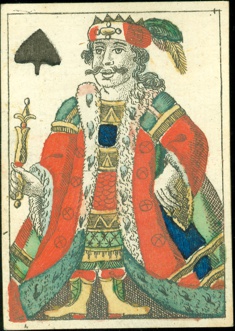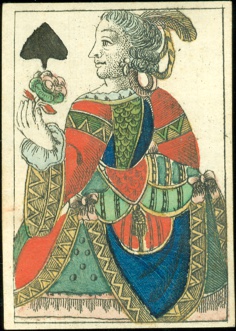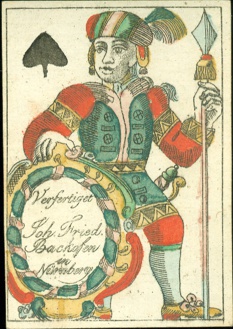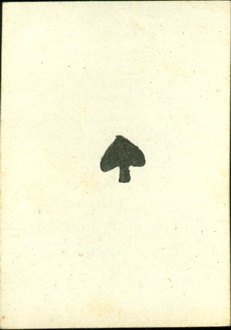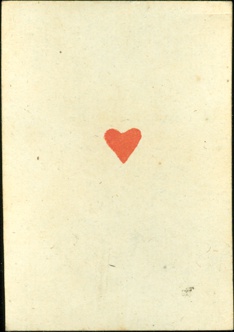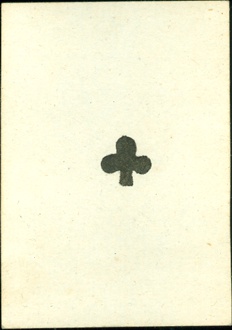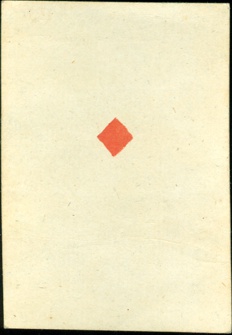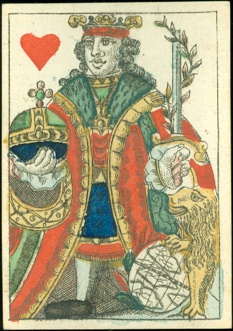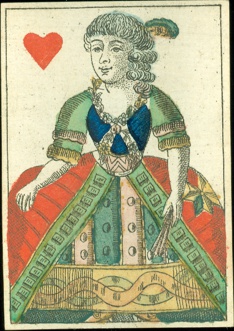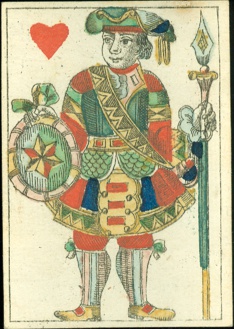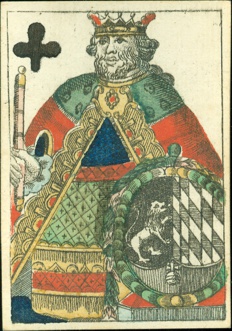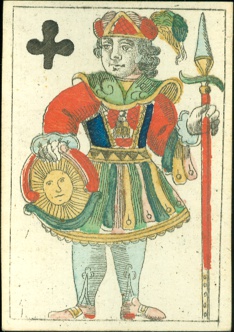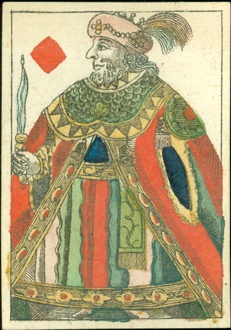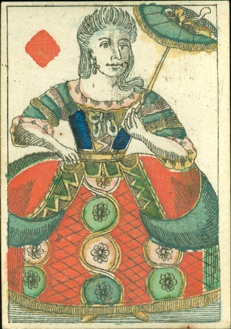November
2017
|
It was a
busy month. There were 2 major collectors fairs and there was only one
week between them. So Joop had to get up early -not his favorite thing-
twice on each occasion. Officially these bourses are on Saturday and
Sunday, but both events have so-called build-up days on Friday and with
a higher entrance fee they are open for visitors too. Although on these
days about 80% of the stalls are filled, the extra fee is usually worth
it, as you sort of have the first pick and that often brings some really
good finds.
This time the first collectors fair in Nieuwegein brought us a Bézique
box with 4 similar antique German decks, in their wrappers, that we
would attribute to Maximilian Frommann and date as from around 1870.
Joop also took along a large playing card press, used in bars to keep
the decks in good, flat condition.
That was on the Friday. |
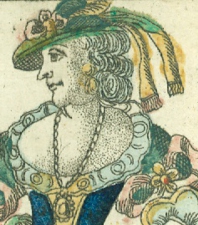 |
|
The second
collectors fair was in the Jaarbeurs in Utrecht. Here Friday didn't
bring any real good finds. However, on Saturday, around noon, Joop
spotted an antique playing card box, with two similar, but very rare
decks. Although worth every penny, the price wasn't cheap and was more
than Joop's playing cards budget allowed at that moment. Fortunately a
befriended playing card collector had a stall there and it was quickly
decided to share this great find. |
But besides
these collectors fairs, there's always the internet and this month it brought us
a couple of decks that would have qualified for this spot. Besides a deck of
cigarette cards from around 1900 with 52 fine portraits of lovely ladies, we had received a
delightful designed deck by Karl Späth, that was printed and published by the
Spielkarten Vertrieb Heinrich Schwarz from Nürnberg, Germany, some time between
1940 and 1948. We had really thought that this would become our Deck of the Mont.
However, halfway this month it was surpassed by far by our great find in
Utrecht....... another and much older deck from Nürnberg (Nuremberg in English).
This time it was
rather easy to tell the manufacturer. His name is on the Jack of Spades: Joh.
Fried. Backofen. But identifying him was more difficult. When we started to do
some research on him, it became clear that he was one of the descendants in a
family full of playing card makers. The deck isn't in the Fournier catalogue,
nor in that of the Gary collection. In the Braun catalogue (Band 9) about playing cards
from Nürnberg we didn't find any pictures, but instead we found information
about the 5 generations of Backofens, who
have been active as manufacturers of playing cards.
It had all
started with Johann Jodocus (Jobst) Backofen, who had gotten the title of master
playing card maker by marrying the widow of the master playing card maker
Gottfried Bleil from Nürnberg. The next generations are described in the Braun
catalogue and the information was based on the book about the Backofen card makers family, as published
by Sigmar Radau in 1997. We have contacted the author, hoping he could give some
information about this deck or the maker, but Mr. Radau wasn't very cooperative
and just wrote that we should buy his book. So here's a family tree until the
fourth generation, with the active card makers, based on the information from
the Braun catalogue. There has been a fifth generation, but it produced only one
card manufacturer, Jobst Wilhelm Backofen. The names in dark blue indicate that
these members of the Backofen family are not known to have been active as card
makers.
Johann Jodocus (Jobst)
Backofen
(1666 - 1730) |
| ^ |
|
Andreas Bartholomäus
Backofen (1663 - 1777) |
|
Jonas Backhofen
(1694 - 1762) |
|
|
|
|
|
|
^ |
|
|
|
|
Johan Friedrich Backofen
(± 1730 - ?) |
|
Johann Matthäus Backofen
(1739 - 1815) |
|
Johann Jobst Backofen
(±1745 - ?) |
|
|
|
|
^ |
|
|
|
|
|
|
Johann Matthäus Backofen
(1766 - ?) |
Johann Georg Heinrich
Backofen (1768 - 1830) |
Johann Georg Friedrich Backofen (1769 - 1834) |
Johann Ernst Backofen
(1772 - 1844) |
Johann Gottfried Backofen
(1773 - 1851) |
|
|
|
|
|
|
|
|
|
|
|
|
|
|
|
|
|
|
|
|
Because the name
Johann Friedrich Backofen is on the Jack of Spades our thoughts first went out
to the third generation. However, there's very little known about him in respect
to the manufacturing of playing cards. His interest was more in music, it seems. At this
moment two German collectors, Klaus-Jürgen Schulz and Frieder Büchler, are
working on a new book about the Backofen family as card makers. They had
already made a family tree, but had added the part of the card on which the name of
the manufacturer is mentioned to each name. They kindly permitted us to use one
of these images for this article. It's possible that each of the
Backofens had his own way
of presenting their name, but it's more likely that the way in which the shield
is designed is part of the pattern. However, we found a similarity in the shield
that Johann
Georg Friedrich Backofen (4th generation) had used to present his name in a deck
with the same pattern, but with text on KC ("à Nuremberg") and JS (see
below) in French.
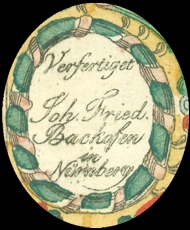 |
The shield on the right is attributed
by Büchler & Schultz to Johann Georg Backofen.
Although the text is in French, here too the maker didn't mention his
second name Georg and only mentions the French version of Johann
Friedrich. So it's likely that our deck was also made by this Johann
Georg Friedrich Backofen. |
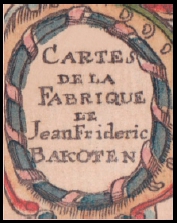 |
Now that we have
probably identified the correct maker within the Backofen family, what is known
about him? Awaiting the new book by Schulz & Büchler, we have to turn to the Braun
catalogue again: Johann Georg Friedrich was the third son of Johann Matthäus
Backofen. He was born in 1769 and lived in the Weisgerber Gasse in Nürnberg. He
worked there as card maker until he sold his card manufactory to Christian
Heinrich Reuter in 1817. The reason for this is unknown. He became a
manufacturer and dealer of quills, moved first to Fürth and later to Erlangen.
He had already resumed the manufacturing of playing cards in Erlangen and in 1822 he
returned to Nürnberg as a playing card manufacturer. However without having the
license for that. It ultimately led to his brother submitting a declaration of
tax evasion against him. Apparently it went even further down hill for him and after losing
his entire fortune he died in poverty in 1834.
What else can the
cards tell us. Well, we learned about a pattern of which we had never heard
before.
The pattern on the
courts is derived from the Paris pattern. This deck has the same pattern as a
pattern, of which examples by different manufacturers are known from around 1750
on and that has been described as the "Churbaierisch"
pattern. That term is used in references to the Kurfürstendom Bayern
(Electorate of Bavaria) of the Holy Roman Empire, which had existed since 1623. Nürnberg
itself has been an Imperial city
(independent city-state) within the Holy Roman Empire since the 13th century. In
the second half of the 18th century the city of Nürnberg was confronted with a
large debt due to war contributions and asked to be part of Prussia, which was
denied. A few years later, under the influence of Napoleon, the
Treaty of the Confederation of the Rhine in 1806 was signed and Nürnberg
remained a free city, but within the Kingdom of Bavaria. Within a few months
after the signing of this treaty the Holy Roman Empire ceased to exist.
The King of Clubs holds a sort of shield that shows the three components of the coat of
arms of the Electorate of Bavaria: the lion, the checkered field and the
Imperial Orb of the Holy Roman Empire. We believe that this is a reference to
indicate that the deck has the "Churbaierisch" pattern. Because the
reference still has the components of the Electorate of Bavaria's shield, we
believe that the deck was made before Bavaria became a kingdom and would date it
as c1800, maybe a bit earlier.
There are a few
other interesting details. All the jacks hold a shield. On the JS that's used to
put the maker's name, but the other shields show a star, a sun and a crescent
moon. I'm not sure if their presence is meant in an astronomical (or even
astrological) sense or if
they are somehow connected with their suit. In the Spades and Diamond suit the
kings have a sort of turban as headwear. They have the looks of a ruler
from the (Turkish) Ottoman empire and the crescent moon is an old symbol in
their culture. The
Ottoman Empire was at it largest in the 17th century and roughly reached from
Budapest to Mecca and from Algiers to Bagdad.
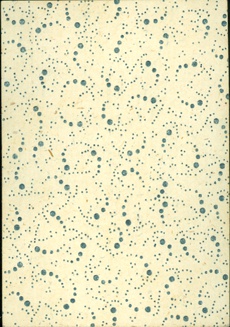 |
We can
without any doubt say that this deck has been our best find in many years. Not only
because of its age, but mainly because it seems that this version of the churbaierisch pattern by a Backofen wasn't known yet.
We have
made scans at 300 dpi of 3 cards and you can click on the KD, QC and JS.
They will open a new window and show an enlarged image of the card.
The deck
consists of 52 cards. The courts seem to be copper engraved and were
stencil coloured.
|
BACK
TO PRESENT MONTH

